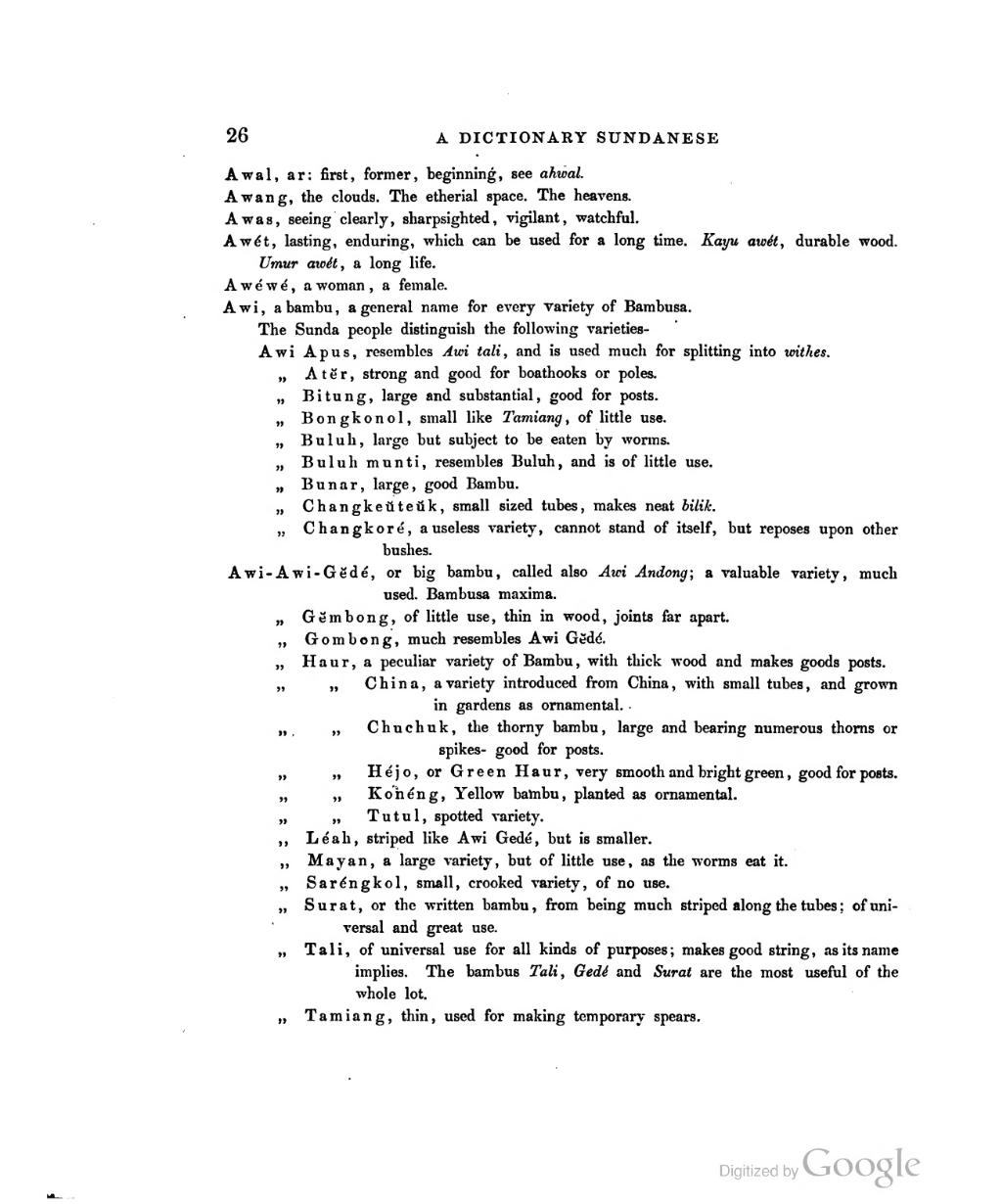This page has been validated.
26
A DICTIONARY SUNDANESE
Awal, ar: first, former, beginning, see ahwal.
Awang, the clouds. The etherial space. The heavens.
Awas, seeing clearly, sharpsighted, vigilant, watchful.
Awét, lasting, enduring, which can be used for a long time. Kayu awét, durable wood. Umur awét, a long life.
Awéwé, a woman, a female.
Awi, a bambu, a general name for every variety of Bambusa. The Sunda people distinguish the following varieties-
- Awi Apus, resembles Awi tali, and is used much for splitting into withes.
- "Atěr, strong and good for boathooks or poles.
- "Bitung, large and substantial, good for posts.
- "Bongkonol, small like Tamiang, of little use.
- "Buluh, large but subject to be eaten by worms.
- "Buluh munti, resembles Buluh, and is of little use.
- "Bunar, large, good Bambu.
- "Changkeǔteǔk, small sized tubes, makes neat bilik.
- "Changkoré, a useless variety, cannot stand of itself, but reposes upon other bushes.
Awi-Awi-Gědé, or big bambu, called also Awi Andong; a valuable variety, much used. Bambusa maxima.
- "Gěmbong, of little use, thin in wood, joints far apart.
- "Gombong, much resembles Awi Gědé.
- "Haur, a peculiar variety of Bambu, with thick wood and makes goods posts.
- ""China, a variety introduced from China, with small tubes, and grown in gardens as ornamental.
- ""Chuchuk, the thorny bambu, large and bearing numerous thorns or spikes- good for posts.
- ""Héjo, or Green Haur, very smooth and bright green, good for posts.
- ""Konéng, Yellow bambu, planted as ornamental.
- ""Tutul, spotted variety.
- "Léah, striped like Awi Gedé, but is smaller.
- "Mayan, a large variety, but of little use, as the worms eat it.
- "Saréngkol, small, crooked variety, of no use.
- "Surat, or the written bambu, from being much striped along the tubes; of universal and great use.
- "Tali, of universal use for all kinds of purposes; makes good string, as its name implies. The bambus Tali, Gedé and Surat are the most useful of the whole lot.
- "Tamiang, thin, used for making temporary spears.
